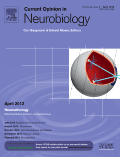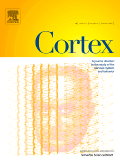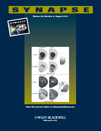
Frontiers in Neuroanatomy
Scope & Guideline
Advancing the frontiers of neuroanatomical knowledge.
Introduction
Aims and Scopes
- Neuroanatomical Mapping and Connectivity:
The journal emphasizes studies that focus on the mapping of neural circuits and connections, which are crucial for understanding brain function and the implications of these networks in neurological disorders. - Morphological and Structural Studies:
Research that investigates the morphology and structural characteristics of neural tissues, cells, and their components is a core focus, contributing to the understanding of how structure relates to function. - Comparative Neuroanatomy:
The journal promotes studies comparing neuroanatomical features across different species, which can yield insights into evolutionary adaptations and functional specializations of the nervous system. - Neurodevelopment and Plasticity:
There is a consistent focus on the developmental aspects of neuroanatomy, including how neural structures form, mature, and adapt over time, which is crucial for understanding developmental disorders. - Technological Innovations in Neuroanatomy:
Frontiers in Neuroanatomy highlights the application of cutting-edge technologies in imaging and analysis, facilitating advancements in the study of neural structures and functions.
Trending and Emerging
- Neuroinflammation and Neurodegeneration:
There is an increasing focus on the role of neuroinflammation and its contribution to neurodegenerative diseases, highlighting the importance of understanding how inflammatory processes affect neuroanatomical structures. - Neuroplasticity and Functional Adaptation:
Research exploring neuroplasticity, particularly in response to environmental changes or injuries, is becoming more prominent, reflecting a growing interest in how the brain adapts and reorganizes. - Integration of Machine Learning and AI in Neuroanatomy:
The application of machine learning and artificial intelligence techniques for analyzing neuroanatomical data is on the rise, facilitating more sophisticated and efficient data interpretation. - Impact of Genetics on Neuroanatomy:
Studies examining the genetic basis of neuroanatomical variations and their implications for behavior and disease are gaining attention, as they provide insights into the biological underpinnings of neuroanatomy. - Translational Research and Clinical Implications:
There is a trend towards research that bridges basic neuroanatomical studies with clinical applications, emphasizing the relevance of findings to neurological and psychiatric conditions.
Declining or Waning
- Traditional Histological Techniques:
While still relevant, there is a noticeable decrease in the publication of studies relying solely on traditional histological methods, as newer imaging technologies gain preference for their ability to provide more detailed insights. - Basic Anatomical Descriptions Without Functional Context:
Papers that focus purely on structural descriptions without linking findings to functional implications or disease relevance are becoming less common, as the field moves towards integrative approaches. - Studies on Non-Mammalian Models:
Although comparative studies are still valued, there has been a reduced emphasis on non-mammalian models in favor of more translational research that focuses on mammalian systems, particularly in relation to human health. - Overly Specialized Topics with Limited Broader Impact:
Research papers that delve into very niche topics without broader implications for neuroanatomy or neuroscience are seeing a decline, as the journal encourages more holistic and impactful studies.
Similar Journals

Cognitive and Behavioral Neurology
Innovating Research in Neurology and CognitionCognitive and Behavioral Neurology is a prominent peer-reviewed journal dedicated to advancing the understanding of cognitive and behavioral aspects of neurological disorders. Published by Lippincott Williams & Wilkins, this journal has established itself as a vital resource for researchers, clinicians, and students in the fields of cognitive neuroscience, neuropsychology, and psychiatry. With an ISSN of 1543-3633 and an E-ISSN of 1543-3641, it offers a robust platform for the dissemination of high-quality research, as evidenced by its positioning in the Q3 quartiles across various categories, including Cognitive Neuroscience and Psychiatry. The journal, which has been actively publishing since 2003, encourages innovative studies that explore the intersection of cognition and behavior in neurological contexts. As a vital contributor to the academic dialogue on these topics, it provides an essential archive of findings and discussions that inform clinical practice and educational approaches, reflecting its commitment to improving patient outcomes and enhancing neurological science.

NEUROPHYSIOLOGY
Illuminating the Complexities of Neural ProcessesNEUROPHYSIOLOGY, published by SPRINGER, is a distinguished journal dedicated to advancing the understanding of neural function and physiological processes across a broad spectrum of topics. With a rich history dating back to 1969, this journal has been instrumental in disseminating pivotal research findings and theoretical advancements within the fields of neuroscience and physiology. Although it currently ranks in the fourth quartile of both the Neuroscience (miscellaneous) and Physiology categories, this journal remains a valuable resource for researchers and professionals seeking to explore innovative methodologies and address critical issues within neurophysiological studies. While NEUROPHYSIOLOGY does not offer open access options, its latest research continues to provide insights and stimulate discussions essential for education and ongoing inquiry. Publishers and contributors to this journal contribute to a growing repository of knowledge right from the heart of the United States.

CURRENT OPINION IN NEUROBIOLOGY
Exploring the Frontiers of Neurobiological InsightsCURRENT OPINION IN NEUROBIOLOGY, published by CURRENT BIOLOGY LTD, stands as a premier interdisciplinary journal in the field of neuroscience, specifically focusing on the latest advancements and emerging trends in neurobiology. With an impressive impact factor bolstered by its classification in Q1 in the Neuroscience (Miscellaneous) category and a notable Scopus rank of #16 out of 113 within General Neuroscience, this journal serves as an essential resource for academics, professionals, and students alike. Since its inception in 1991, CURRENT OPINION IN NEUROBIOLOGY has consistently provided insightful reviews covering various aspects of neurobiological research, thereby enhancing our understanding of complex neural processes. While the journal is not open access, it remains committed to disseminating high-quality research and fostering scholarly dialogue, making it a critical platform for those seeking to keep abreast of the dynamic developments in neuroscience.

NATURE REVIEWS NEUROSCIENCE
Elevating understanding in the realm of neuroscience.NATURE REVIEWS NEUROSCIENCE is a prestigious journal published by NATURE PORTFOLIO, renowned for its commitment to advancing the field of neuroscience. Since its inception in 2000, it has become a significant platform for disseminating comprehensive reviews and insights that shape the understanding of neurological science. With an impressive Scopus ranking of #2 out of 113 in the General Neuroscience category, this journal consistently engages the top 2% of researchers and professionals in the field, underscoring its impactful contributions. The journal not only provides a forum for high-quality reviews but also bridges emerging research trends with established knowledge, fostering a robust discourse among scholars and practitioners. As a Q1 journal in Neuroscience (miscellaneous), NATURE REVIEWS NEUROSCIENCE offers invaluable access to critical research developments, making it an essential resource for students, researchers, and professionals aiming to stay at the forefront of neuroscience advancements. Explore the latest findings and engage with a global community dedicated to unraveling the complexities of the nervous system.

CORTEX
Advancing Understanding of the Brain and BehaviorCORTEX is a premier international journal published by Elsevier Masson, focusing on the cutting-edge areas of cognitive neuroscience, psychology, and neurology. With an impressive impact factor that places it in Q1 quartiles across multiple categories such as Cognitive Neuroscience and Neuropsychology, this journal serves as a vital resource for researchers, clinicians, and students alike. Established in 1964, CORTEX has continued to excel in disseminating high-quality scholarly work, offering insights that significantly enhance our understanding of the brain's functioning and behavior. Although not an open-access publication, it provides various access options to ensure the dissemination of knowledge is as wide-reaching as possible. As the field of cognitive psychology evolves, CORTEX remains at the forefront, fostering an environment for interdisciplinary collaboration and innovation. Researchers seeking to stay engaged with the latest advancements will find CORTEX an indispensable tool for their professional development.

SYNAPSE
Advancing Knowledge, Shaping the Future of NeuroscienceSYNAPSE, an esteemed journal in the field of Cellular and Molecular Neuroscience, is published by Wiley and serves as a vital platform for disseminating groundbreaking research in neuroscience. Established in 1987, this journal has been pivotal in exploring the intricate mechanisms governing synaptic function and neural communication, contributing to our understanding of the nervous system. With an ISSN of 0887-4476 and an E-ISSN of 1098-2396, SYNAPSE is indexed in Scopus and currently holds a Q4 quartile ranking in its category, reflecting its niche yet significant presence within the research community. Despite its recent ranking in the 21st percentile among its peers, the journal’s commitment to quality and innovation remains unwavering. It is published from Hoboken, New Jersey, and although it is not an open-access journal, it provides invaluable insights and critical reviews that are pivotal for researchers, professionals, and students alike who seek to advance their knowledge in the dynamic field of neuroscience. Join us in contributing to the ever-evolving discourse in cellular and molecular neuroscience through SYNAPSE.

Neurobiology of Language
Illuminating the neural pathways of linguistic expression.Neurobiology of Language, published by MIT Press, is a premier scholarly journal dedicated to pioneering research at the intersection of linguistics and neuroscience. As part of the prestigious Q1 quartile in both Linguistics and Neurology, this journal not only ranks in the top tier of its fields—placing 41st out of 1167 in Linguistics and 57th out of 192 in Neurology according to Scopus—but also serves as a vital platform for innovative studies that explore the complexities of language from a neurobiological perspective. Though offered under a traditional subscription model, the journal ensures accessibility to groundbreaking research that is crucial for advancing our understanding of how language is processed and represented in the brain. With a focus on works produced between 2020 and 2024, the Neurobiology of Language is committed to disseminating influential and transformative research that shapes the future of cognitive science, language development, and neuropsychology, making it an essential resource for researchers, professionals, and students alike.

JOURNAL OF COMPARATIVE NEUROLOGY
Connecting Minds: Comparative Insights in NeuroscienceThe Journal of Comparative Neurology, published by Wiley, stands as a cornerstone in the field of neuroscience since its inception in 1911. With an ISSN of 0021-9967 and an E-ISSN of 1096-9861, this esteemed journal spans a comprehensive scope of comparative neuroanatomy, neurophysiology, and neural development, providing critical insights into the intricate workings of nervous systems across species. The journal has earned a prestigious Q2 ranking in the category of general neuroscience for 2023, showcasing its substantial impact, reflected in its Scopus ranking of #47 out of 113 journals in its field. Researchers and professionals examining evolutionary patterns, neural structure functions, and comparative studies will find this journal an invaluable resource. Although it does not provide open access, its rigorous peer-review process ensures the publication of high-quality research that is crucial for advancing knowledge in comparative neurobiology. With a commitment to fostering scholarly exchange, the Journal of Comparative Neurology remains dedicated to exploring the complexities of the nervous system through a comparative lens, making it a vital platform for the global neuroscience community.

Neural Development
Connecting Global Minds in Developmental NeuroscienceNeural Development, published by BMC, is a premier open access journal dedicated to advancing the field of Developmental Neuroscience. Established in 2006, this journal continues to foster high-caliber research on the cellular and molecular mechanisms underlying neural development, contributing significantly to our understanding of brain structure and function. With a commendable Q1 ranking in the 2023 category of Developmental Neuroscience and a notable position as the 8th out of 37 journals in the field on Scopus, it is recognized for its rigorous peer-review process and impactful publications. Researchers, professionals, and students benefit from the widespread accessibility of its content in an evolving landscape of neuroscience studies. As an open-access journal, Neural Development ensures that groundbreaking discoveries are available to a global audience, facilitating collaboration and innovation in the exploration of neural mechanisms. With its strong commitment to quality and relevance, this journal remains at the forefront of developmental neuroscience research.

JOURNAL OF CHEMICAL NEUROANATOMY
Bridging Neuroscience and Chemistry for Groundbreaking DiscoveriesJOURNAL OF CHEMICAL NEUROANATOMY, published by Elsevier, focuses on the intersection of neuroscience and chemical processes, making it an essential resource for researchers and professionals in the field. With a commitment to advancing the understanding of the cellular and molecular underpinnings of neuroanatomy, this journal has provided a platform for innovative research since its inception in 1988, with its current dissemination period extending through 2024. Operating from the Netherlands, it has earned its place in the Q3 category of cellular and molecular neuroscience as per the 2023 assessments. While it currently does not offer Open Access options, the journal remains a valuable asset in disseminating cutting-edge studies that explore the complexity of the nervous system. With its ISSN 0891-0618 and E-ISSN 1873-6300, the journal serves a diverse audience, including researchers, clinicians, and students, fostering collaboration and innovation in the ever-evolving field of neuroanatomy.